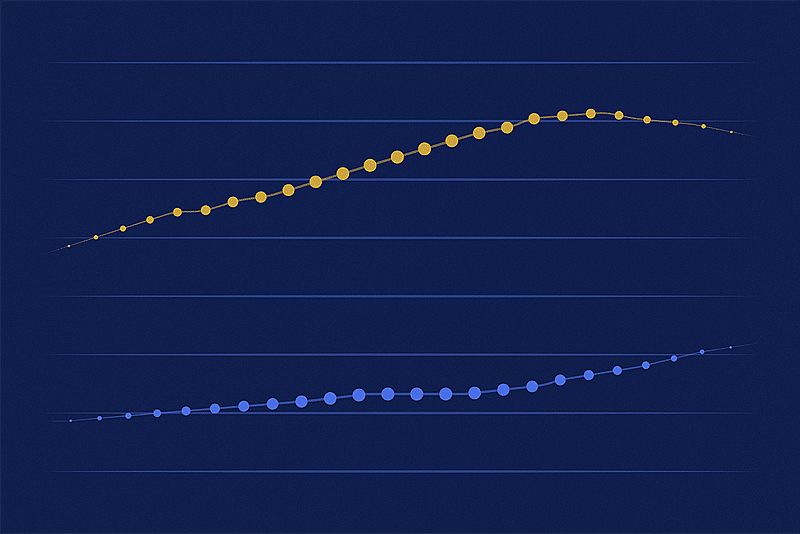A Lifeguard Shortage in 2023?
It’s been a hot summer. The headlines in early July flashed red declaring June the hottest month in recorded history. And that record didn’t last long…July was hotter than June. Temperatures of pavement and other outdoor surfaces have been dangerously high – causing third degree burns and requiring emergency treatment. Air conditioners are running constantly putting additional stress on our already vulnerable energy systems.
We need relief.
How about a dip in the pool?
Pools are refreshing and not as costly as those air conditioners. The US has approximately 309,000 public pools. They provide an escape from summer’s uncomfortable weather and this year they are needed more than ever. Yet, about half of them are either closed or operating at reduced hours because of a nationwide lifeguard shortage – a shortage that began three years ago and is getting worse.
Not enough lifeguards?
Being a lifeguard was a cherry summer job to land when I was growing up. It was certainly a better option than the manual labor of landscaping or tending to a greasy fryolator at a fast-food restaurant.
The pandemic is clearly behind us, yet labor shortages continue to challenge our everyday function. The labor market’s strength continues to perplex economists. Where are all the workers? Why is the unemployment rate so low? What’s causing so many unfilled jobs?
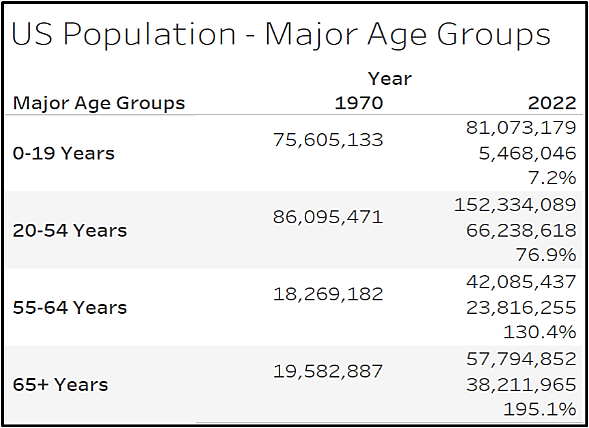
Why Is There A Lifeguard Shortage?
Some of the answers are hiding in plain sight. COVID has acted as a tipping point – exposing our demographic vulnerabilities. We have a fundamental misunderstanding of the size, shape, and age structure of our society. According to the US Census Bureau, the number of people under 20 years old has grown from 75.6 million in 1970 to 81 million in 2022 – an increase of almost 5.5 million or 7%. During the same time period, the number of people aged 20-54 has grown more than 10 times that amount, almost 77%, from 86 million to 152 million (see chart).
In 1970, these two age groups were similar sized and today, those under 20 are almost half the size of those 20-54. The chart below shows percentage of total by major age groups. People under the age of 20 made up almost 40% of our population in 1970 and now is less than 25%.
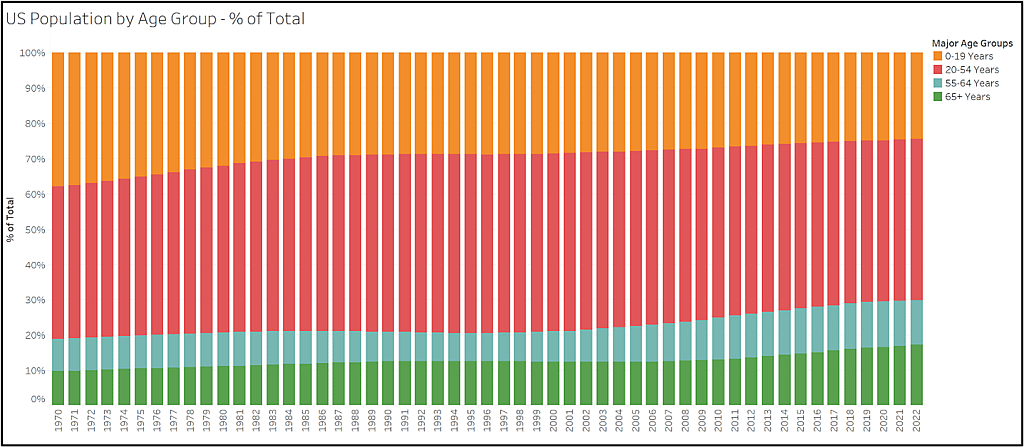
While the pandemic certainly disrupted lifeguard certification classes and communal swimming isn’t really a good social distancing practice, we should not expect a lifeguard shortage to go away soon. They are here to stay. Not because of training or a desire to be a lifeguard, but rather because we have fewer younger people to fill the role.
A Major Shift In Population
Common narrative around population suggests an abundance of younger people, yet that is far from true. Heavily relied upon modeling has been flawed and misleading. Largely unnoticed and unreported declines in fertility have driven down birth rates over the past few decades and we are now feeling the impacts. The US Census Bureau has consistently over projected fertility rates (see below) and as a result, our society has been expecting more children. You’ll note from the chart that US fertility has not been at replacement level but once since the early 1970’s. Sub-replacement fertility means that the US is not producing enough children to maintain existing population levels. While immigration has largely overcompensated and masked these declines over the years, it no longer does.
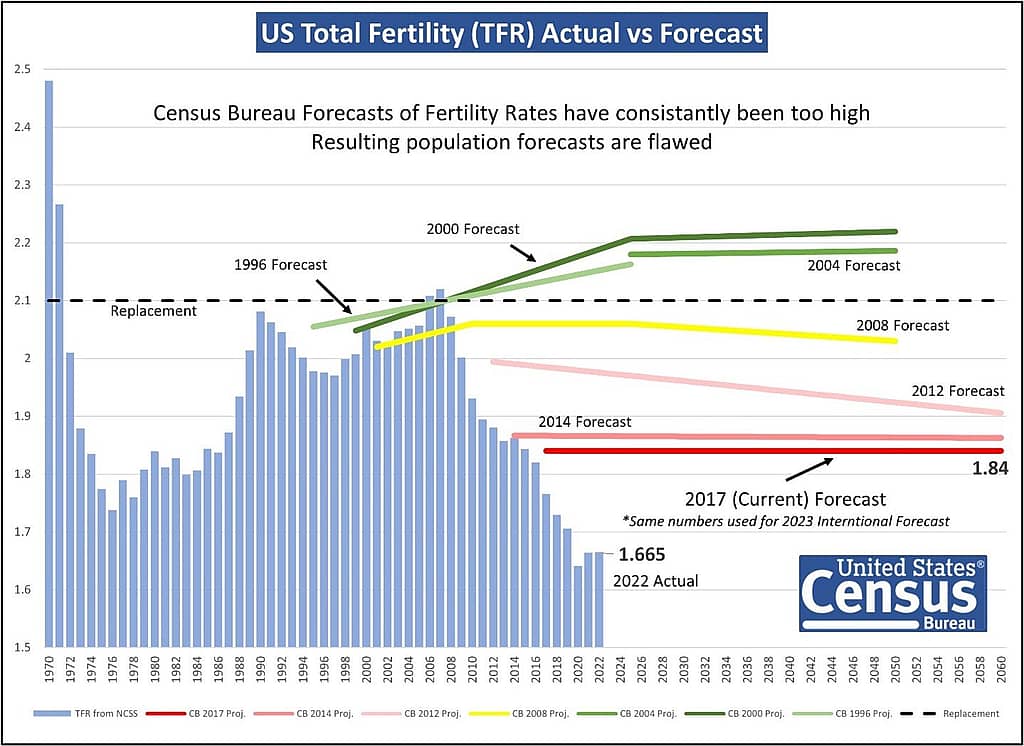
Although not declared yet, 2023 marks a very important time for our population. For the first time in US history, the number of older people, those over 65, outnumber those under 15. Further, as the chart below depicts, because of declining births and increased life expectancies we will see a complete inversion in the number of young versus old.
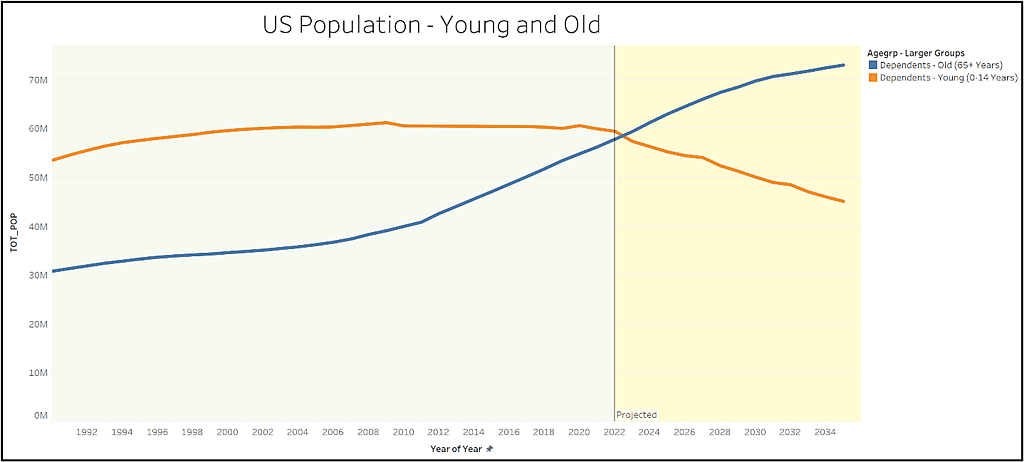
The size and significance of the baby boomer generation reaching old age has long been written about and discussed. Retirement communities and nursing homes have had a chance to be planned and built and, except for the COVID curveball, people are enjoying longer lives than ever before. The not so sudden decline of young people, though, has not been anticipated. Planners, developers, divisions of local, state, and federal governments have not been well informed and have not been able to plan. Everything needs to change. Everything will change.
Using The Data To Move Forward
Bad decisions are made when based on flawed facts. Infrastructure has and continues to be built under the premise of never-ending need. Daycare centers, schools, family sized homes – all continue to anticipate future growth of young people. Yet there will be fewer and fewer of them, not more and more. We need to understand what’s really going on with workers and get the numbers right. We need to recognize facts and use common sense.
Companies need to consider what kinds of goods and services are needed in our changing societal structure. Businesses should anticipate a listing effect – one side tilting in the opposite direction. Adult incontinence products will soon be as important if not more so than children’s diapers. Orthodontic braces will become less important than preserving the ability for older people to chew their food.
Proper planning also involves evaluating our overall allocation of resources. Investments and human resources should be targeted to those areas of biggest need and impact. Nurses, doctors, and other healthcare workers will only increase in demand. Today’s labor shortages will continue to be persistent and long lasting. We do not have enough people on the bench ready to jump in. We don’t have enough junior staff, apprentices, or even students to back fill our needs.
Market need will drive innovation. Let’s hope the promise of technological advances like robotics and artificial intelligence materializes. Until then, be prepared to do more with less to attract and retain great talent.
How Will These Trends Affect Your Business?
I try to stay away from policy advocacy in my work. Instead, I focus on the numbers. I want to raise the level of awareness of these topics like the lifeguard shortage and prevent problems before they happen.
Some say fewer children being born in the future is a good thing. Some say it is a bad thing and that it should be reversed. I’m here to simply say it’s a thing – a really, really big thing – and we need to plan properly.
Does your business depend on a certain age group of people? Are you aware of these shifts going on?
Are you a young person considering your future? Do you know what’s going on around you?
Are you older and dependent on others to take care of you? Are you struggling to take care of a loved one?
The implications of these trends are wide and deep.
Are you prepared?
Solutions are available. Don’t let change lead you. Inquire Now.



